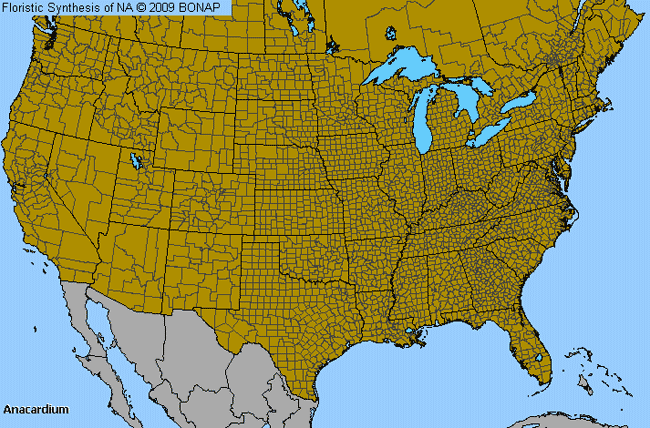Cashewnut (Anacardium)

Cashewnut Genus Details

The common cashew tree is an evergreen and can grow to 40' tall. It has milky juice and simple leathery alternate leaves 8" long and 4" wide. Cashew trees are native to tropical America and grown in Florida and California in the U.S. The nuts are kidney shaped and borne on an enlarged receptacle that is white or red.
Cashewnut Allergy Info

Food allergy to cashew nuts has been reported and can cause severe reactions in allergic individuals. Pollen from this genus has not been reported frequently as an inhalant allergen. The oil around the nut may cause dermatitis and even the fumes from roasting the nuts can be irritating.
Cashewnut Pollen Description

Grains are prolate to spheroidal; the amb triangular with convex sides and 3-colporate or occasionally brevicolpate to porate. The colpi are typically long and narrow and the sexine is often striate.
Pollen grains are generally 25-30 micrometers.
Species in This Genus

Allergenicity Legend:
 Mild Allergen |
Mild Allergen |
 Moderate Allergen |
Moderate Allergen |
 Severe Allergen |
Severe Allergen |
 Allergy Test Available
Allergy Test Available
Cashewnut (Anacardium) is a genus of the ANACARDIACEAE family.
This genus includes the following allergenic species:
This genus includes the following allergenic species:











